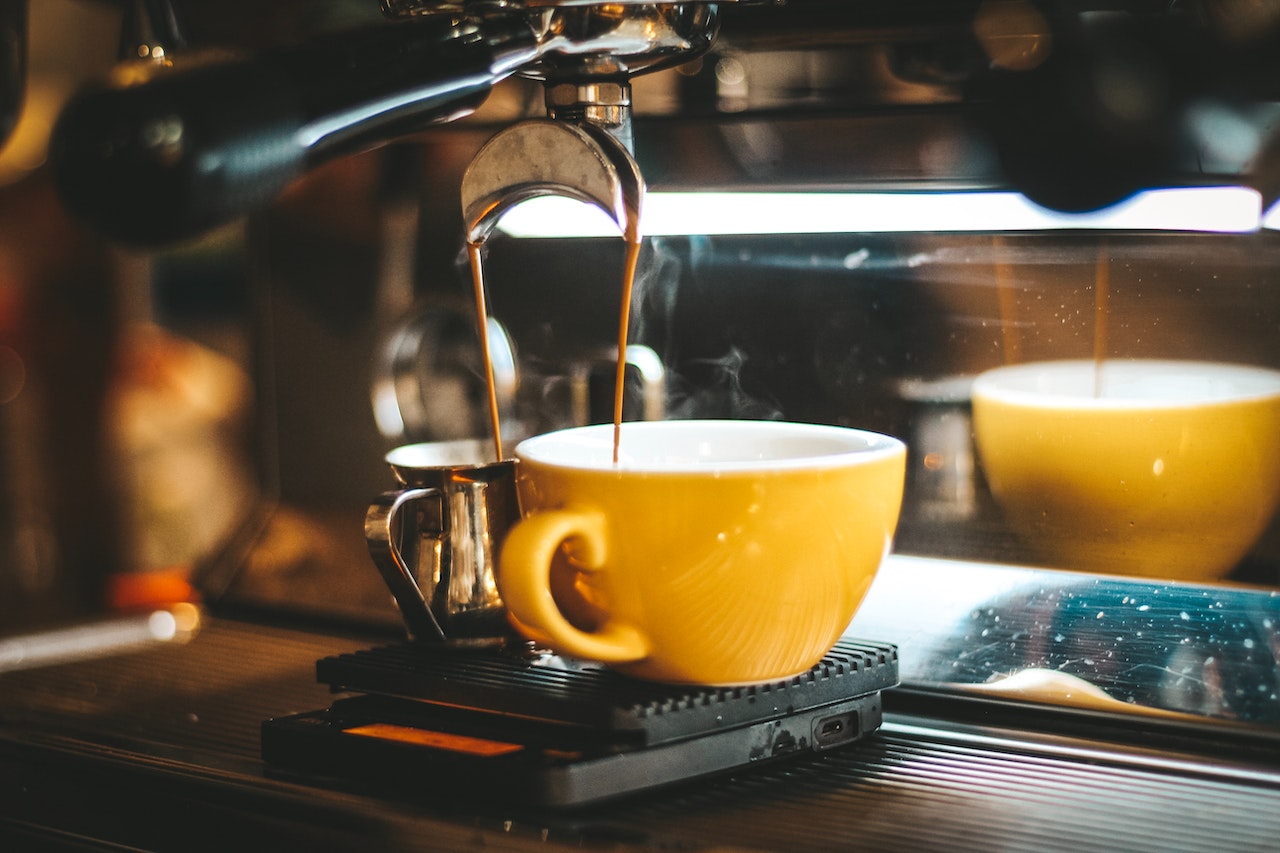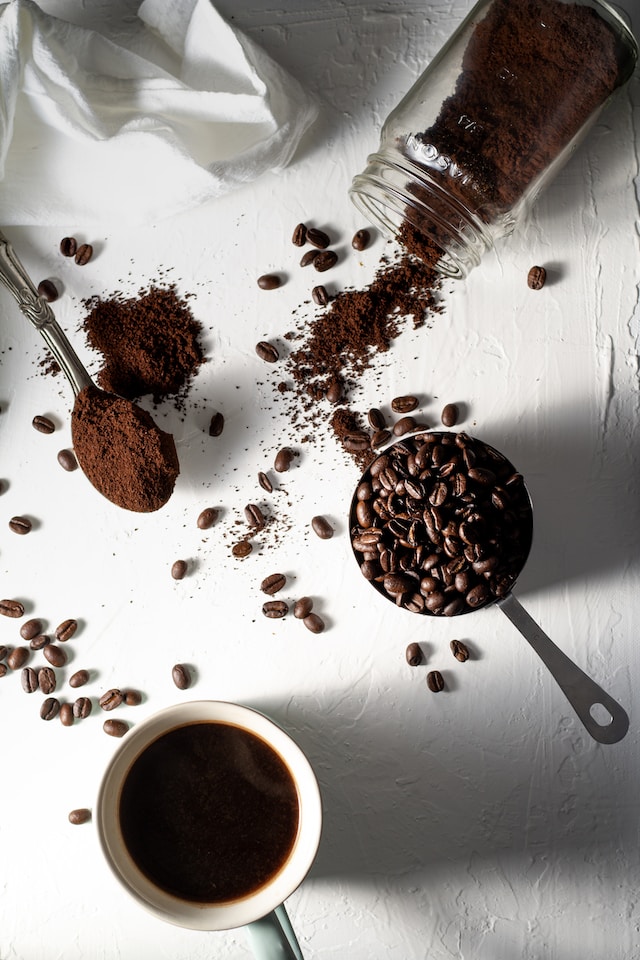There is nothing better than a strong cup of coffee to start the day, but it depends on the individual to go for the stronger or the lighter one. The word “strong” is frequently used while discussing coffee, and it holds the distinction of being frequently used by both coffee experts and regular coffee consumers.
For instance, while most baristas are familiar with the term “extraction,” most customers won’t really use it. Contrarily, “bold” is frequently used by consumers but doesn’t really have a defined meaning in terms of insider slang.
However, the topic of whether coffee is too strong, too weak, or the perfect strength is one that everyone discusses. So here we’re going to talk about what coffee strength actually means and, more importantly, how you can control the intensity of your coffee brew.
Brew Ratio
The ratio of coffee to water in a brew is referred to as the brew ratio. Any amount may be brewed using this weight-based technique, whether it be in a small cup or a big pot. The proportion 1:18 (sometimes written 18:1) is known as the “golden ratio” for coffee since it tends to result in the most balanced cup. The translation of this is one part coffee to eighteen parts water. To characterize the strength of the coffee, we utilize the brew ratio. A greater ratio will result in a lighter brew, while a lower ratio will result in a more concentrated brew.
To imply that adjusting the brew ratio alone will affect your power and nothing else is an oversimplification. Changing the dosage can impact how long it takes for water to flow through coffee grounds in brew processes that need water to flow vertically through the grounds (such as pour overs or, notably, espresso). Additionally, significant brew ratio adjustments may make it more difficult for the water to remove certain flavor components from the grounds (imagine the water being too full). However, altering the brew ratio is the simplest method to make your coffee weaker or stronger, especially in little doses.
Grind size and brew time, together with your brew ratio, have the biggest effects on the flavor of your coffee. While grind size affects how much soluble material dissolves throughout the brew period, ratio dictates how much coffee is brewed. The objective is to balance all of your factors perfectly to make a nice cup of coffee.
Choose your coffee makers
Coffee makers for bold, full-flavored coffee. These coffee machines are made to make strong, flavorful coffee.
- French Press: This time-honored method of brewing coffee employs a permanent metal filter to extract all the flavorful oils and tiny grinds into the cup. The end product has a full body, full flavor, and is about as rich as black coffee can be. The bottom of the mug usually has a “gritty” sensation with French press coffee, but not with this one.
- Metal-Filter Pour Overs: Pour overs with a metal filter may still provide a flavorful brew if you like a somewhat smoother body than you would with a regular paper filter.
- Moka Pots: This coffee maker produces a highly concentrated coffee that falls between black coffee and espresso. Because of this, moka pots are frequently referred to as “stovetop espresso makers”. Although it has a thick mouthfeel and is very concentrated, many individuals find it to be excessively potent.
Coffee makers for lighter brews. There are coffee makers that can help you steer clear of bold brews. Here are some…
- Auto-Drip Coffee Makers: These so-called “regular” coffee makers employ a medium-thick paper filter that removes most of the oils and fine grinds that form a strong brew.
- Most Pour Overs: The majority of pour over brewers employ larger filters which not only provide a smooth and clean flavor but also tame it and create a very light feeling.
- Pods: Coffee pods are infamous for using little coffee, which nearly invariably results in a coffee that tastes lighter. If you want strength, avoid pods and capsules at all costs.
Change brewing technique
You always have some degree of control over the flavor of your coffee if you’re using a manual coffee maker (as opposed to an automatic one, like a coffee pot or Keurig). You may steer your coffee in the correct way with a small change to your recipe or method. The choices are as follows.
- Add some more coffee. You may get a stronger flavor by adding a little bit more coffee than normal. However, because there is less water available for each coffee grind, less extraction occurs, adding coffee will also result in a little more acidic flavor in your beverage. No more than 10% additional coffee is what we advise.
- Give your beans a finer grind. If you only alter the size of your grind, you may enhance the overall extraction to create a taste that is somewhat more robust or full-flavored. Smaller grinds extract more quickly. Remember that over-extraction (overshooting the equilibrium region) and a harsh, lifeless flavor will result from grinding too finely.
- Extend the brewing period a little. Add 15 to 30 seconds to the brew time if you’re using a french press (or another technique where you have direct control over the brew length) to boost extraction. Just keep in mind that excessive extraction might result from brewing for too long.
Use bolder coffee beans
Sometimes trying a different coffee is the only option left. Everyone has different tastes, so there’s no need to push yourself to like the coffee you’re drinking.
- Use freshly roasted coffee: Coffee beans that haven’t been lying on the shelf for a while have lost some of their flavor and caffeine.
- Use a dark roast: Compared to light roast, dark roast coffee beans have a richer, bolder flavor. Additionally, they have more caffeine.
- Use a coarse grind since it will allow more flavor and caffeine to be extracted from the coffee due to its bigger surface area.
If the tastes in the coffee from the aforementioned suggestions aren’t strong enough, you probably want to try a medium-dark or dark roast coffee the following time. These coffees are more likely to contain the traditional strong taste characteristics, such as smooth earthiness or nuttiness, creamy chocolate, rich caramel, and gentle acidity.
Extraction level
You might just try to draw more or less of those taste ingredients instead of just plainly adjusting the amount of coffee you’re using. You’ll always have some coffee grinds leftover unless you’re brewing instant coffee since about 30% of coffee is water soluble. Variables like grind size, brew time, and water temperature affect how much of it are properly dissolve and extracted.
Coffee is quite complex, and distinct flavors emerge from it at various points throughout the brewing process. You will receive coffee that is acidic and not sweet enough if you extract a low percentage of the chemicals from that coffee. You’ll obtain too-bitter coffee if you extract at a high percentage.
Aim for an extraction rate of 18 to 22 percent, which will offer you a decent balance of sweetness, acidity, and bitterness in practically all coffees. Therefore, if we don’t want bitter coffee, we must leave part of those chemicals in the coffee grounds even if we want to be efficient with our coffee and not squander the good substance in it.
Dilute and skip the brewing
Coffee can be diluted with water if it is excessively strong despite having the proper flavor balance. Only the strength will alter; the extraction won’t. In fact, this is already being done by many bigger coffee brewers at coffee shops in a procedure known as “bypass,” which involves pouring some water over the edge of the grinds basket. This is similar to what happens when you make an Americano (espresso that has been watered down to standard coffee strength) or flash-chilled iced coffee (adding water after it has passed through the grounds in the form of ice).
There are two major paths to take if you want your coffee to be stronger or weaker the next time you prepare it:
- Adjust the number of grinds if you’re satisfied with the harmony of tastes in your coffee (it’s not too bitter or too sour, it’s pure Goldilocks coffee), but you only want it to be more or less powerful.
- Adjust the grind size, brew time, or temperature if you want the coffee to be more or less powerful and if you also want the balance of sour, sweet, and bitter to be different.






